products categories
- Battery Production Equipment Line
- Battery Lab Pilot Equipment Line
- Lithium Battery Pack Assembly Line
- Solid State Battery Assembly Line
- Sodium Ion Battery Production Line
- Supercapacitor Assembly Line
- Lithium Ion Battery Recycling Plant
- Dry Electrode Preparation Solution
- Perovskite Based Solar Cell Lab Line
- Li ion Battery Materials
- Cathode Active Materials
- Anode Active Materials
- Customized Battery Electrode
- Coin Cell Parts
- Lithium Chip
- Cylindrical Cell Parts
- Battery Current Collectors
- Battery Conductive Materials
- Electrolyte
- Metal Mesh
- Battery Binder
- Separator and Tape
- Aluminum Laminate Film
- Nickel Strip
- Battery Tabs
- Graphene Materials
- Nickel Felt
- Titanium Fiber Felt
- Battery
- Battery Pack Machine & Compoments
- Battery Pack Compoments
- Turnkey Solutions Battery Pack Assembly Line
- Cell Sorter
- Battery Pack Spot Welder
- Laser Welder
- Battery Charging Discharging Tester
- Battery Pack Aging Machine
- Battery Pack Comprehensive Tester
- CCD Visual Inspector
- Battery Pape Sticking Machine
- BMS Testing Machine
- Al Wire Bonding Machine
- Lithium Battery Machine
- Battery Tester & Analyzer
- Battery Safety Tester
- Battery Material Tester
- Rolling Press Machine
- Spot Welding Machine
- Vacuum Mixer Machine
- Crimping/Disassembling Machine
- Vacuum Sealing Machine
- Electrolyte Filling
- Stacking/Winding Machine
- Electrode Cutter/Slitter
- Pouch Forming Machine
- NMP Solvent Treatment System
- Lithium Battery Production Plant
- Vacuum Glove Box
- Furnaces
- Coaters
- Hydraulic Press
- Ball Mill
- Planetary Centrifugal Mixer
- Cutting Machine
- Laboratory Machine
- Metal Foam
contact us
- If you have questions, please contact us, all questions will be answered
- WhatsApp : +86 13174506016
- Email : David@tmaxcn.com
- Email : Davidtmaxcn@gmail.com
- Add : No. 39, Xinchang Road, Xinyang, Haicang Dist., Xiamen, Fujian, China (Mainland)
-
 Battery Short Circuit Test Machine
Battery Short Circuit Test Machine
-
 Battery Short Circuit Test Machine
Battery Short Circuit Test Machine
-
 Fully-auto prismatic EV-battery cap welding & leak test machine
Fully-auto prismatic EV-battery cap welding & leak test machine
-
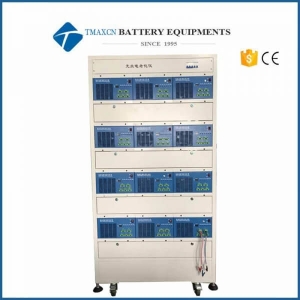 30V 10A 20A 18650 26650 32650 Battery Pack Charging&Discharging Testing Equipment& Aging Test Machine
30V 10A 20A 18650 26650 32650 Battery Pack Charging&Discharging Testing Equipment& Aging Test Machine
30V20A 4 Channel Battery Tester for Lithium Battery Charging and Discharging Cycle Testing
-
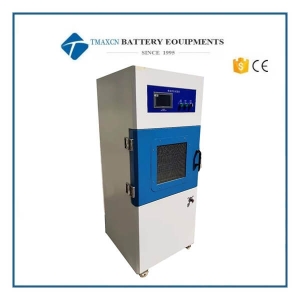 Hydraulic Driven Crushing & Nail Penetration Tester for Battery Safety Test
Hydraulic Driven Crushing & Nail Penetration Tester for Battery Safety Test
Battery vercharge-proof box testing machine
-
 Gravity Impact Tester for Lithium Battery Safety Test
Gravity Impact Tester for Lithium Battery Safety Test
Battery vercharge-proof box testing machine
-
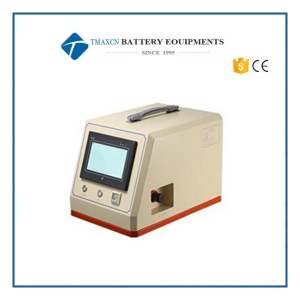 Air Tightness Tester Air-leakage Test Machine
Air Tightness Tester Air-leakage Test Machine
MSK-180S is a gas driven die cutter for producing pouch battery cathode/anode electrodes ( no electricity required ) Its compact design enables the operation inside a glove box with Ar atmosphere where moisture/oxygen-sensitive electrodes will be cut
-
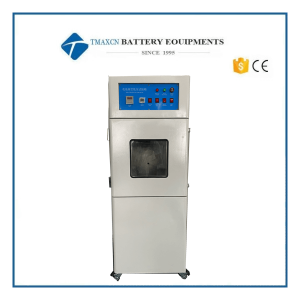 Laboratory Simulation Battery High Altitude Low Voltage Test Box Machine for Lithium Battery R&D
Laboratory Simulation Battery High Altitude Low Voltage Test Box Machine for Lithium Battery R&D
-
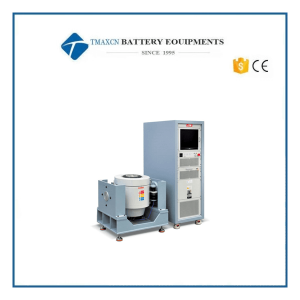 Laboratory Battery Electromagnetic Vibration Tester Machine for Lithium Battery R&D
Laboratory Battery Electromagnetic Vibration Tester Machine for Lithium Battery R&D
-
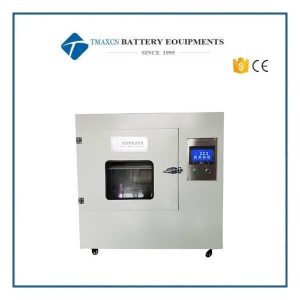 Laboratory Battery Burning Tester Machine for Lithium-ion Battery R&D
Laboratory Battery Burning Tester Machine for Lithium-ion Battery R&D
-
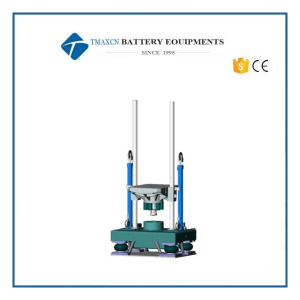 Laboratory Battery Mechanical Impact Tester Testing Machine for Lithium-ion Battery R&D
Laboratory Battery Mechanical Impact Tester Testing Machine for Lithium-ion Battery R&D
-
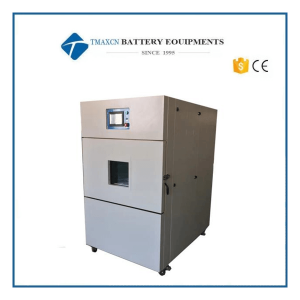 Laboratory Battery Washing Tester Machine for Lithium-ion Battery R&D
Laboratory Battery Washing Tester Machine for Lithium-ion Battery R&D
-
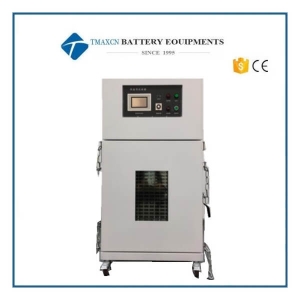 Laboratory Battery Heating Testing Tester Box for Baking and Aging Experiments
Laboratory Battery Heating Testing Tester Box for Baking and Aging Experiments
Laboratory Battery Heating Testing Tester Box for Baking and Aging Experiments Introduction This series of equipment is one of the commonly used equipment in various baking and aging experiments. It is suitable for electronic instrumentation, materials, electrical engineering, vehicles, metals, electronic products, and various electronic vitality parts to test their performance in a temperature environment. The use of indicators and quality management, etc. Features ◆Using a touch screen controller, high-end atmosphere, powerful function, single-point temperature control or program temperature control mode selection ◆Affordable price, saving user budget ◆The casters are installed at the bottom, which can be moved according to the placement position ◆PT100 thermal resistance temperature sensor, high precision, fast temperature sensing, high temperature resistance, low maintenance ◆Users can meet the special requirements of the laboratory according to the processing type of the inner and outer chamber walls ◆The outer box is made of cold-rolled steel plate, sprayed and painted, corrosion-resistant and high-temperature resistant, and has a perfect structure ◆The inner box uses 304# mirror panel, with smooth surface, corrosion resistance and high temperature resistance, easy to clean, and easier to maintain ◆It can be customized in any size, no waste of space in use Executive standard GB31241-2014 7.8 Thermal Abuse Test Standard in Safety Requirements for Lithium-ion Batteries and Battery Packs for Portable Electronic Products Technical parameters Structure Inner size W500*D500*H500 mm; Outer size W770*D720*H1270 mm, based on the actual product; Control panel The control panel is installed on the top of the machine (as shown in the figure); Opening method Single door opens from right to left Visual window The door is equipped with a window, specification W300*H400mm Inner material 304# stainless steel mirror panel, 1.2mm thick Outer material Cold-rolled steel plate, 1.5mm thick. Powder paint treatment (wrinkle grayish white) Interlayer The inner part is divided into two layers, adjustable, the first layer is 100mm from the bottom, and the above is divided equally, with two mesh panels Heat preservation material High temperature resistant rock wool, with good heat preservation effect Sealing material High temperature resistant foamed silicone strip Test hole There is one test hole on the right side of the machine, with a diameter of 50mm. Wheel The machine is equipped with movable casters and adjustable fixed foot cups, which are convenient to move and fix the position. Temperature Control System Temperature controller The temperature controller is a 580 touch screen, fixed value or program operation control temperature can be selected for use, can be automatically calculated, PV/SV are displayed at the same time, touch to set (as shown in the figure) Timing function Built-in timing function, timing when the temperature is up, and the heating is stopped when the time is up, and an alarm will be given at the same time. Data port Computer connection port RS232 interface Curve The temperature curve during operation can be viewed on the touch screen meter. Temperature sensor PT100 high temperature type Control output signal 3-32V Heating controller Solid state relay SSR without contact Heating material High temperature adder Temperature range Normal temperature +20~200℃ temperature adjustable Heating rate 5℃±2.0/min, using program time to control heating rate Control accuracy ±0.5℃ Display accuracy 0.1℃ Test temperature 130℃±2.0℃; (no-load test) Temperature deviation ±2.0°C (130°C/150°C)(no-load test) Air supply system Air supply method Internal hot air circulation, air out of the inner box on the left side, return air on the right side Motor The motor is a special type with long shaft and high temperature resistance, 370W/220V Fan The fan is a 9-inch multi-wing turbine type Air inlet and outlet There is one air inlet on the right side and one air outlet on the left side. Power supply device Voltage AC220V/50Hz single phase Current 20A Total power 4.5KW Temperature circuit protection system Over-temperature protection system When the temperature is out of control and exceeds the set temperature of the over-temperature protector, the heating and power supply will be automatically stopped to protect the safety of products and machines Circuit protection Grounding protection, fast insurance, overload protection, circuit breaker, etc. Safety device protection system Pressure relief device An explosion-proof pressure relief port is opened at the rear of the inner box, and when the battery explodes, the shock wave generated is discharged instantly, which effectively protects the safety of the machine, the specification is W300*H300mm Protective device on the door Explosion-proof chains are installed on the four corners of the door to prevent the door from falling off and flying out in the event of an explosion, damaging property and personnel safety.
-
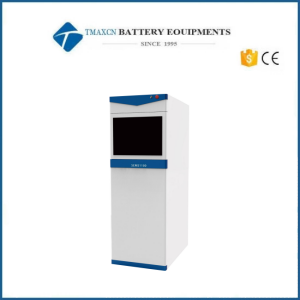 High Precision Solid Electrolyte Testing Tester Machine for Battery R&D
High Precision Solid Electrolyte Testing Tester Machine for Battery R&D
High Precision Solid Electrolyte Testing Tester Machine for Battery R&D The Importance of Electrochemical Performance of Solid Electrolyte Driven by the rapid development of the lithium-ion battery (LIB) industry, improving the energy density and safety of the battery is an important research direction of for the LIB researchers. All-solid state battery is considered to be the most promising secondary battery with high safety and high specific energy in the future. Solid electrolyte (SE) is the most important core component, and the most important performance indicators used to judge the performance of solid electrolyte are ionic conductivity,Li-metal interface stability and full cell performance. On the one hand, the density, roughness and integrity of the pressed solid electrolyte sheet determine the conductivity of the solid electrolyte and the cycle performance of the full cell.; On the other hand, the accuracy of the test results can only be guaranteed by the stable and uniform stress application and the accurate thickness measurement during the experiments. Therefore, the production and testing system that can exert stable and standardized pressure plays a key role in the development of solid electrolyte and lithium metal battery Limitations of Traditional Production and Traditional Testing Traditional tableting The traditional process generally uses a manual tablet press to press the solid electrolyte powder. The force of traditional manual method is uneven and cannot reach a high pressure, which will cause the thickness of SE sheet asymmetry with relatively low density, and finally trigger the depression, edge falling and fragmentation, etc., of the SE sheet after demoulding. Moreover, the traditional method need take a lot of time for the applying and releasing pressure, which seriously affects the experimental process and research efficiency Traditional test procedure: The traditional test method just simply holds the ceramic chip to measure the electrochemical properties. Because the force of the traditional test method is uneven, the maximum of the applied force is also limited, and the applied pressure cannot be quantified and maintained at a fixed value, the compression condition will exist great differences for samples with different thickness, area and roughness. Thus the experimental conditions cannot be normalized and standardized, and the measurement results will have poor consistency and low reproducibility. Condition exploration: Traditional clamps or fixture cannot provide uniform, stable and variable pressure for the preparation of solid electrolyte sheets or the exploration of test conditions. Measurement mode: Only constant pressure, non-quantifiable pressure, small pressure range, and unstable compression condition during the test. Accurate Test Method for Solid Electrolyte by TMAX For the testing method of the ionic conductivity of the solid electrolyte, we refer to the T/SPSTS 019-2021 standard, and combine with ther the testing method of the ionic conductivity of the solid electrolyte, we refer to the T/SPSTS 019-2021 standard, and combine with the general test process in the industry, including the standardization of sample preparation, fixture design, test device, and test conditions: Sample preparation: Oxide materials must be subject to high-temperature crystallization treatment (generally above 900 ℃) to ensure good ion transport performance. Generally, the density of electrolyte sheet is>95%, and the thickness is>500 μm; In terms of electrode preparation, the electrode must be polished with sandpaper with more than 3000 meshes and sprayed with conductive gold of a certain thickness (>5 μm) , after which the good interface contact can be ensured. Grind the edge of the metal with sandpaper to prevent short circuit. Use a multimeter to ensure the electronic continuity between any two points on the surface. The sulfide materials can directly be tested by cold compression process. During the test, a certain pressure (usually >200 MPa) must be guaranteed to ensure good ion transport performance. Fixture design: A flat and compact contact surface, and a stable and uniform force application structure (quantifiable pressure) are required.. Test device: An electrochemical workstation system capable of measuring high frequency impedance (>1MHz) is required. A short lead with good signal shielding is also required Test conditions: Select appropriate temperature and humidity, quantization pressure, frequency range and amplitude voltage. For the electrochemical performance of solid lithium battery (charge-discharge cycle, electrochemical window), we combine the general test process in the industry, including the sample preparation, fixture design, test device, and standardization of test parameters: Electrolyte preparation: Oxide materials must be subject to high-temperature crystallization treatment (generally above 900 ℃) to ensure good ion transport performance. Generally, the density of electrolyte sheet is>95%, and the thickness is>500 μm. It must be with strictly polished by the sandpapers. During the direct cold pressure test of sulfide materials, a certain pressure (usually>200MPa) must be guaranteed to have good ion transport performance. Electrode preparation: The positive electrodes shall be prepared by scraping, screen printing, sputtering deposition and other methods. The negative electrodes shall be prepared by surface treatment, melting, physical/chemical deposition, pressing and other methods to ensure good interface contact. Fixture design: It needs a flat and compact contact surface, and a stable and uniform force application structure (quantifiable pressure). Test conditions: Appropriate temperature and humidity, certain quantitative pressure, and strict sealing device Solid Electrolyte Test Equipment Solid electrolyte test system SEMS (IEST) is a multifunctional test system dedicated to solid electrolyte samples. It is a fully automatic measuring device for the electrochemical performance of solid electrolyte that integrates tableting, testing and calculation. The system adopts integrated design, including pressurization module, electrochemical test module, compaction density measurement module, and clamp, etc., which is applicable to the test of various oxides, sulfides, polymers and other kinds of electrolytes. Scheme 1: high-precision automatic test system, model SEMS1100 Equipment parameters Pressure measurement accuracy 0.05-5T Pressure measuring range ±0.3%F.S Thickness test range 0-8mm Thickness test resolution 0.5um Thickness test accuracy ±10um Sample mould diameter 13mm, customized Temperature and humidity range 0-50C/20%-90%RH Temperature and humidity accuracy ±2C/±5%RH Installation requirements Power supply 220-240V/50-60Hz Voltage variation tolerance ±10% Power consumption 300W Ambient temperature 25±5C Ambient relative humidity ≤80%RH(no condensation) Ambient magnetic field Keep away from strong electromagnetic fields Scheme 2: simple manual test device, model SEMS1000 (applied to electrochemical test) Parameters Pressure measurement accuracy 10-400kg Pressure measuring range ±0.3%F.S Thickness test range 0-8mm Thickness test resolution 5um Thickness test accuracy ±10um Sample mould diameter 13mm, customized Temperature and humidity range 0-50C/20%-90%RH Scheme III: simple manual test device, model SEMS1300 (applied to ionic conductivity test) Parameters Pressure measurement accuracy 50-2000kg Pressure measuring range ±0.3%F.S Thickness test range 0-8mm Thickness test resolution 5um Thickness test accuracy ±10um Sample mould diameter 13mm, customized Temperature and humidity range 0-50C/20%-90%RH Application 1. Powder production The equipment can be used to tablet the powder samples under different pressure conditions, and the tablets obtained by SEMS are intact and free of cracks. 2. Ionic conductivity Through the electrochemical impedance spectroscopy (EIS) module of SEMS, the ionic conductivity of solid electrolyte under different pressures can be obtained automatically 3. Electronic conductivity&compaction density Through the DC polarization (DP) module of SEMS, the electronic conductivity and compaction density of solid electrolyte under different pressures can be obtained automatically. 4. Solid state battery cycle performance Through the charge-discharge test (CD) module of SEMS, the cycle performance of solid lithium metal battery under different pressure and different electrochemical parameters can be analyzed. 5. Electrochemical stability window Through the cyclic voltammetry (CV) module of SEMS, it is possible to analyze the electrochemical stability window of solid electrolyte under different pressure.
-
 Fully-auto Battery Cap Welding & Leak Testing Machine for Prismatic Cell Production
Fully-auto Battery Cap Welding & Leak Testing Machine for Prismatic Cell Production
 ru
ru
 Iris@tmaxcn.com
Iris@tmaxcn.com David@tmaxcn.com
David@tmaxcn.com +86 13174506016
+86 13174506016 18659217588
18659217588